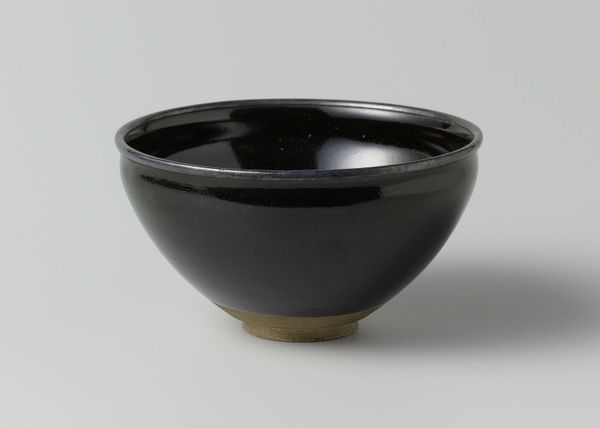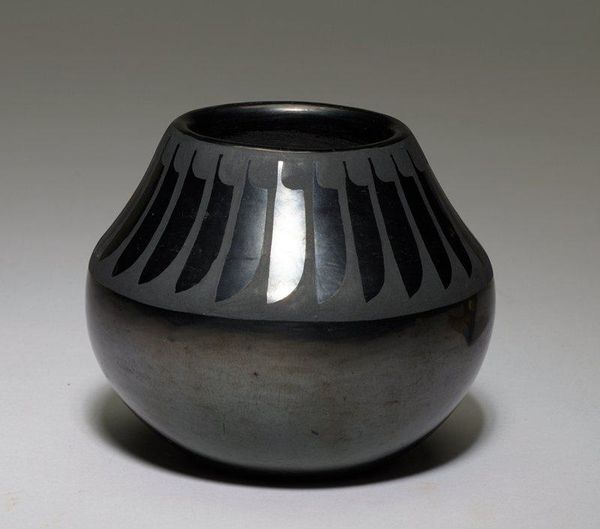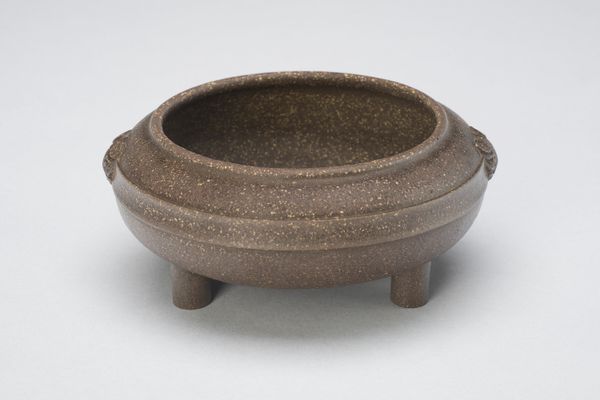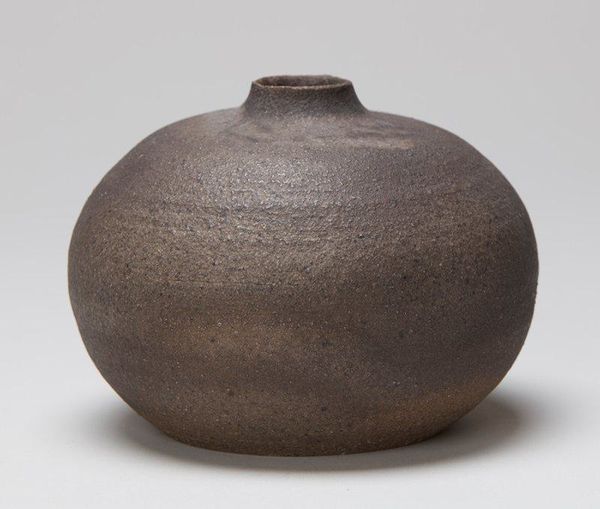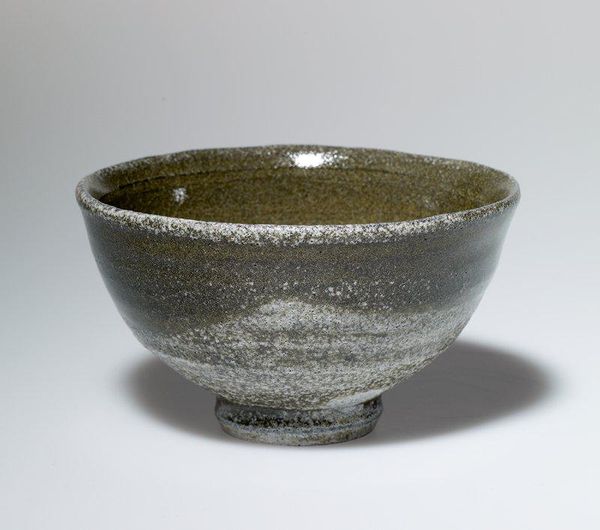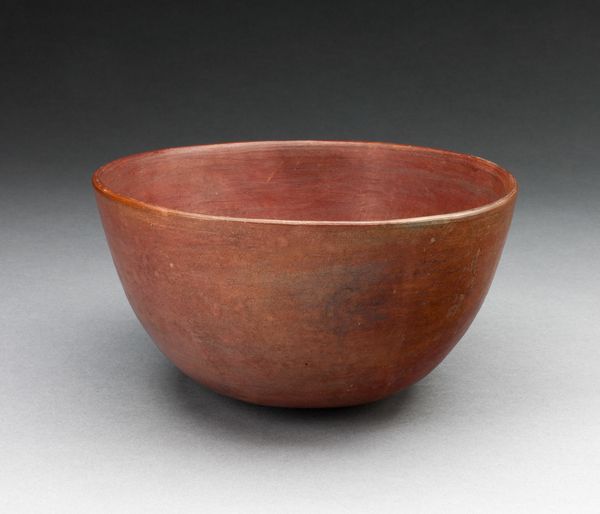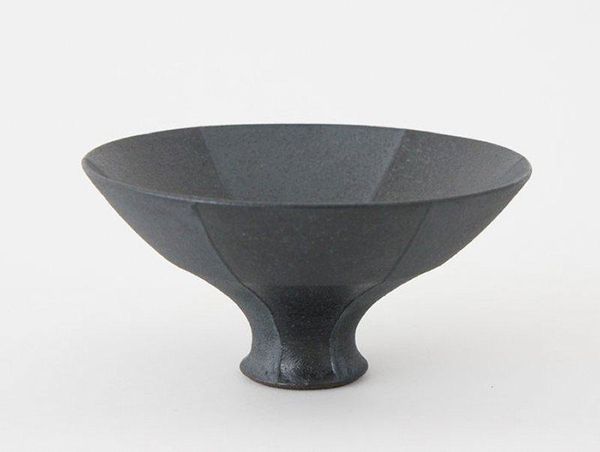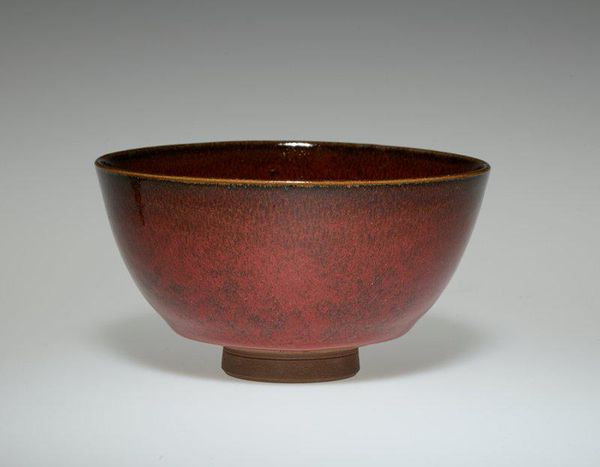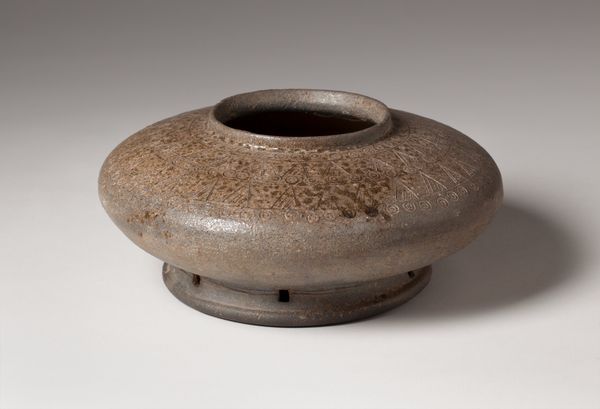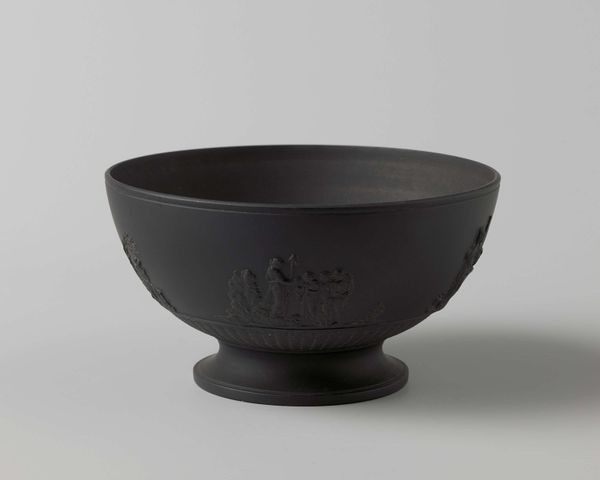
ceramic
#
ceramic
#
form
#
ceramic
#
decorative-art
Dimensions: H. 12.7 cm (5 in.); diam. 18.7 cm (7 3/8 in.)
Copyright: Public Domain
Editor: So here we have "Spittoon," a ceramic piece made around 1820 by Wedgwood Manufactory. It’s surprisingly elegant for its function, almost neoclassical with that distinct band of texture around the center. What strikes you about its design? Curator: Its pure form certainly dominates. Note the interplay between the sphere of the base and the flared lip—a dramatic, almost theatrical gesture. Consider how the vertical fluting and the horizontal band create a tension, a push and pull across the surface. What kind of energy does that convey to you? Editor: I guess that contrast does make it more dynamic; otherwise it might feel heavy and static. Curator: Precisely. Now, let's consider the monochrome palette. The uniformity of the color directs our focus purely to form and texture. Does the absence of color heighten your awareness of the tactile qualities? Editor: Yes, definitely. You start to see it as an object to be felt, not just looked at. And without color, those tiny imperfections in the ceramic become more pronounced, too. Curator: Indeed. These subtle variations contribute to the piece's authenticity. It reveals the hand of the maker, despite being a product of manufacture. Editor: That's a really interesting point. I wouldn't have picked up on those details without looking closely. Curator: Art often rewards attentive viewing. What initially appears simple can reveal unexpected layers of complexity upon deeper investigation. Editor: I definitely have a new appreciation for spittoons now. Thank you for sharing that insightful analysis with me! Curator: My pleasure. Examining art's intrinsic elements reveals the power of simplicity and nuanced detail.
Comments
No comments
Be the first to comment and join the conversation on the ultimate creative platform.
